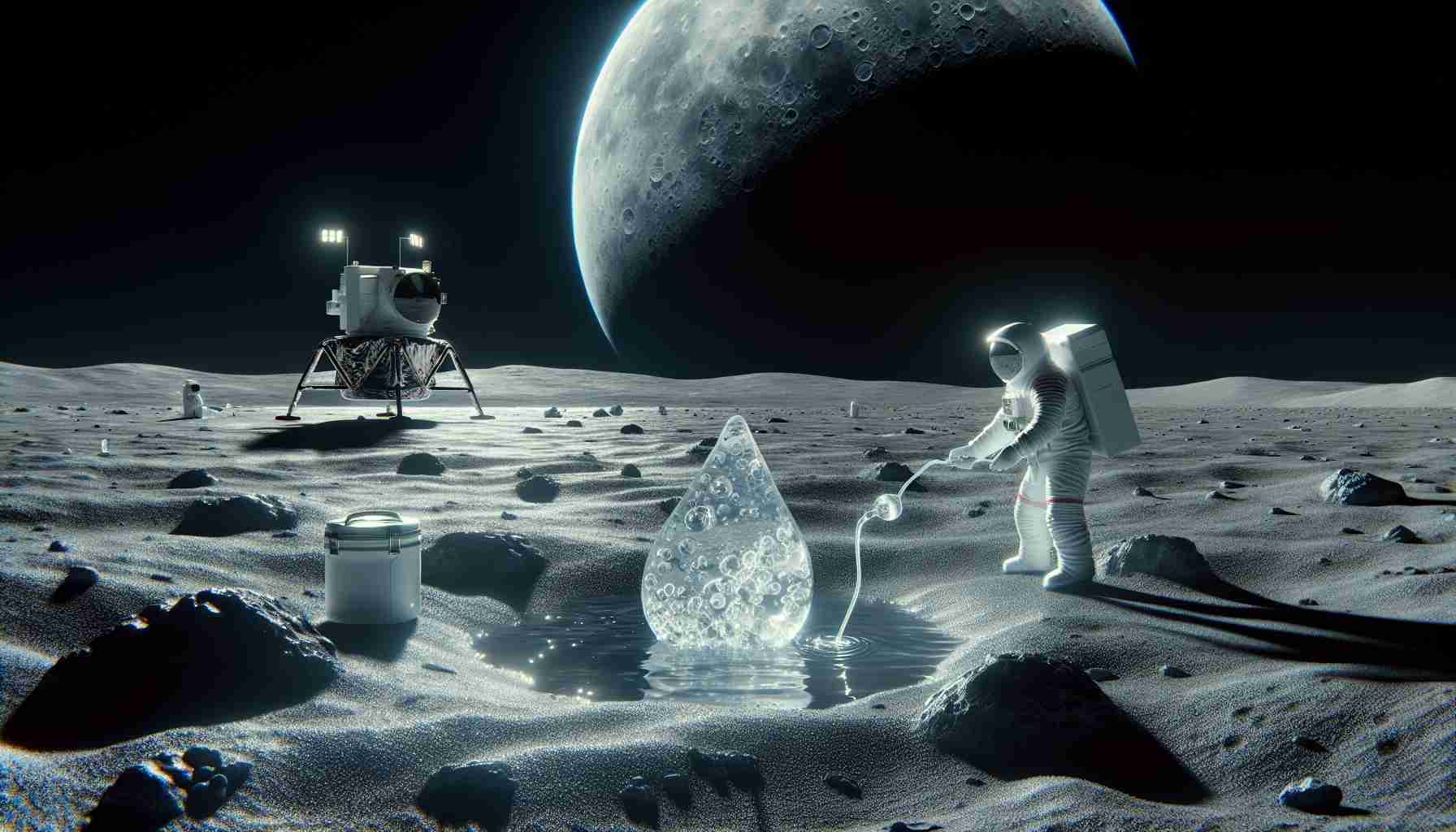Scientists make a groundbreaking discovery on the moon: There is water present along with minerals in the lunar soil. While past missions identified water on the moon’s surface, this recent finding is the first time water in its molecular form, H2O, has been found in natural samples.
Chang’e-5 mission: Researchers carefully examined samples collected by China’s spacecraft, Chang’e-5, which landed on the lunar surface in 2020. They discovered a prism-like, plate-like transparent crystal, dubbed ULM-1, consisting of about 41% water along with ammonia molecules stabilizing the water molecules despite extreme temperature fluctuations on the moon.
Challenges of extracting water: Different types of water may exist on the moon, including molecular water, ice, and a molecular compound known as hydroxyl. Previous discoveries indicated lunar water originating from ancient volcanic eruptions, suggesting water has been present on the moon since its early years.
Potential for Future Exploration: This new finding paves the way for potential extraction of molecular water directly from lunar soils, providing insight into possible resources for future lunar missions. Understanding how water is stored on the moon could have implications for sustainable exploration and potentially utilizing water for various purposes like drinking or as rocket fuel.
China’s Lunar Ambitions: China has made significant progress in lunar exploration, aiming to establish a research base on the moon’s south pole by 2030. The rapid advancements in China’s space exploration program reflect the country’s ambition to become a space power.
Implications for Space Architecture: While the current findings may not have immediate implications for mission architectures, they underscore the importance of continued lunar exploration. These discoveries await those willing and capable of exploring the moon further.
Conclusion: The discovery of water in a unique form on the moon opens up new possibilities for understanding lunar resources and potential future exploration. While it may be early to draw definitive conclusions about cultivating plants on the moon using this molecular water, this newfound phenomenon signifies a step forward in lunar exploration and our understanding of Earth’s celestial neighbor.
Additional Discoveries Unveiled: A Deeper Dive into Lunar Water Composition
In the realm of lunar exploration, recent breakthroughs have shed light on the intricate composition of water on the moon, unveiling fascinating new details beyond what was previously known. The revelation of prism-like, plate-like transparent crystals such as ULM-1, not only containing water but also ammonia molecules, has sparked a new wave of questions among scientists and space enthusiasts alike.
Key Questions:
1. What specific role do ammonia molecules play in stabilizing water on the moon’s surface?
2. Are there other unique forms of water crystallization waiting to be discovered on the lunar terrain?
3. How does the presence of molecular water impact future plans for sustained human presence on the moon?
Answers and Challenges:
1. The interaction between water and ammonia molecules raises intriguing possibilities for utilizing these compounds in future lunar exploration endeavors. However, the exact mechanisms behind this stabilization process remain a subject of ongoing research.
2. While previous studies hinted at the existence of lunar water, the recent identification of prism-like crystals suggests a more complex water cycle on the moon than previously thought.
3. Challenges surrounding the extraction and utilization of molecular water on the moon involve developing efficient technologies capable of harvesting and processing this valuable resource in a harsh lunar environment.
Advantages and Disadvantages:
The discovery of water in a unique form on the moon presents a multitude of advantages, including the potential for sustainable resource utilization during future lunar missions. Water could serve as a vital asset for drinking water, life support systems, and even as a propellant for spacecraft. However, the complexities associated with extraction, processing, and transportation of lunar water pose significant challenges that must be overcome.
Related Links:
NASA
European Space Agency
As we delve deeper into the mysteries of lunar water, each new discovery brings us closer to unlocking the full potential of Earth’s celestial neighbor. The intricate interplay between water, minerals, and other compounds on the moon’s surface continues to captivate the scientific community and fuel our collective curiosity about the universe beyond.



